
Those of us who worry about our teenagers getting behind the wheel do so because we know we can’t always be there to stop them from making mistakes that could lead to an accident. We get especially anxious when we hear reports about texting while driving that say this reckless behavior is commonly practiced among teens.
Who doesn’t worry when they see reports like the latest survey of teenage drivers by the AAA Foundation for Traffic Safety? The report says that in more than half of teen-driver crashes, the driver was inattentive or preoccupied with some other non-driving-related activity. Another survey found that more than half of teens admit that they occasionally text and drive.
Fortunately, we can be proactive. Here are four important steps and additional help toward taking an active role in stopping distracted driving in your household.

- Be the Parent. If we want our children to not drive while distracted, we have to teach them. Arthur Goodwin, senior research associate at the Center for the Study of Young Drivers at UNC-Chapel Hill’s Highway Safety Research Center, said parents should strive to share the wisdom, awareness and understanding they’ve developed in many years of driving. Parents tend to focus on basics like turning, stopping and other vehicle handling skills when riding with their new drivers, a news release from the Center says. As teens become more comfortable with handling the vehicle, Goodwin said the instruction should focus on helping the teen learn to see traffic and road conditions the way an experienced driver does.In North Carolina, teens with a learner’s permit must log 60 hours of supervised driving practice to get a limited provisional license, so there’s time set aside for parents to talk to their teen drivers about distracted driving and the reality of injuries and death in car accidents. Keep in mind that children learn as much by watching what you do as by what you say. The behavior you model for your kids matters. Make sure you don’t text or talk on the phone or engage in other distractions while you drive.
Here are some additional points about How to Communicate With and Listen to Your Teen.
- Take the No Distracted Driving Pledge. Granted, not every teen will buy into this, but if you do, it will show them how important this issue is to you. A pledge card, like the one at Distraction.gov, spells out the promise to avoid distracted driving in concrete terms. By signing, your teen pledges to protect lives by never texting or talking on the phone while driving and to encourage others to avoid distracted driving. The National Safety Council’s Focused Driver Challenge allows teens to pledge to never use a cellphone while driving and, with a click, share their commitment on Facebook.
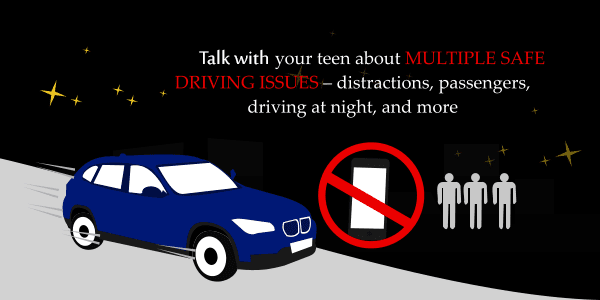
- Talk with your teen about multiple safe driving issues – distractions, passengers, driving at night, and more – with the National Safety Council’s New Driver Deal or AAA’s Parent-Teen Driving Agreement.
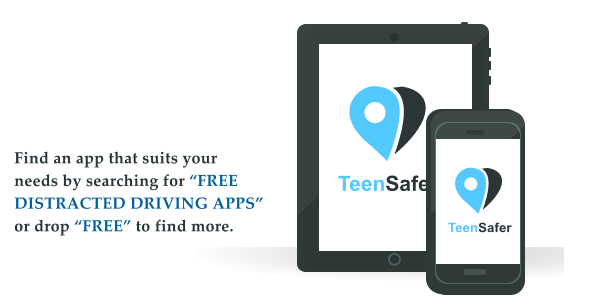
- Try an App. It seems counterintuitive to use an app, since using cellphones and similar devices – which are where apps reside – are the predominant distracted driving danger, especially among teens. But there actually are several apps that help discourage distracted driving. Here are a few free apps to take a look at:
- TeenSafer detects that a vehicle is moving and automatically puts the device in “Safe Mode.” A curtain screen blocks access to the keyboard and screen, and it silences all notifications and alerts of incoming calls, texts and email.
- VeHawk lets the account holder (a teen’s parents) view a variety of data about the driver of the car the app device is in. This includes any texting or phone call activity, as well as speeds and geographic trip data. Info is uploaded to a website and email alerts are available for specific violations.
- Sprint DriveFirst/AT&T DriveMode/Verizon Safely Go. These free apps from each of the major carriers block calls and texts when they sense that a car is moving. They can also send automatic replies to texts that let senders know that the app owner is driving and will respond later.
- Find an app that suits your needs by searching for “free distracted driving apps” or drop “free” to find more.
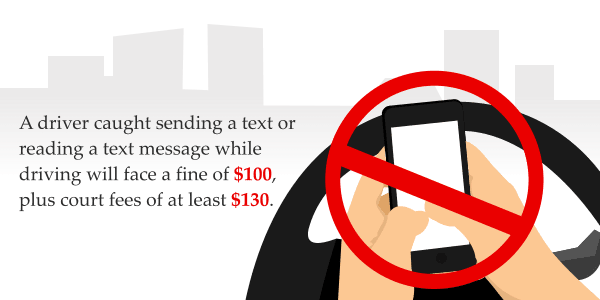
- Call the Law. Make sure your child understands North Carolina laws pertaining to teen drivers and cellphone use. It is against the law in North Carolina for anyone to text while driving. A driver caught sending a text or reading a text message while driving will face a fine of $100, plus court fees of at least $130.
Drivers under the age of 18 are also prohibited from using a mobile phone or any technology associated with a mobile telephone while their vehicle is in motion. The law prohibits using email, music, the Internet, games or a digital camera while driving. If they get caught, they could face a $25 fine.
And while some in North Carolina say it’s hard to enforce the law, this is only leading law enforcement agencies to look for new ways to catch distracted drivers. Enforcement of distracted driving laws is the objective of the “U Drive. U Text. U Pay.” national distracted driving enforcement campaign.
You can also tell your teen that if they cause an accident because they were texting while driving or otherwise distracted, they will suffer the legal consequences. In addition to criminal charges, this may include being named in a personal injury lawsuit filed by anyone who they injure or in a wrongful death lawsuit if they cause the unthinkable.
If you or a loved one has been injured in a collision caused by a distracted driver in North Carolina, talk to a car accident lawyer who investigates distracted driving accidents about your legal options.


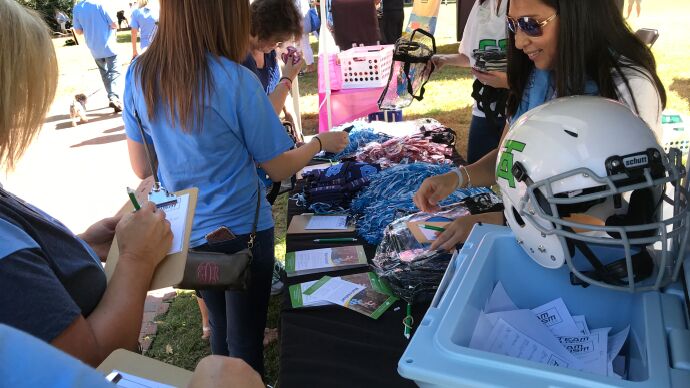

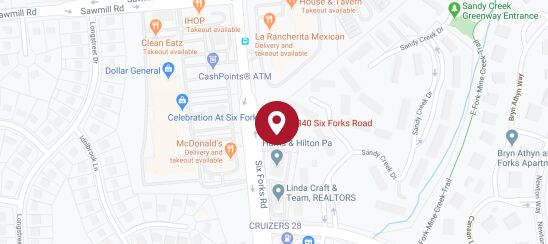
Leave a comment